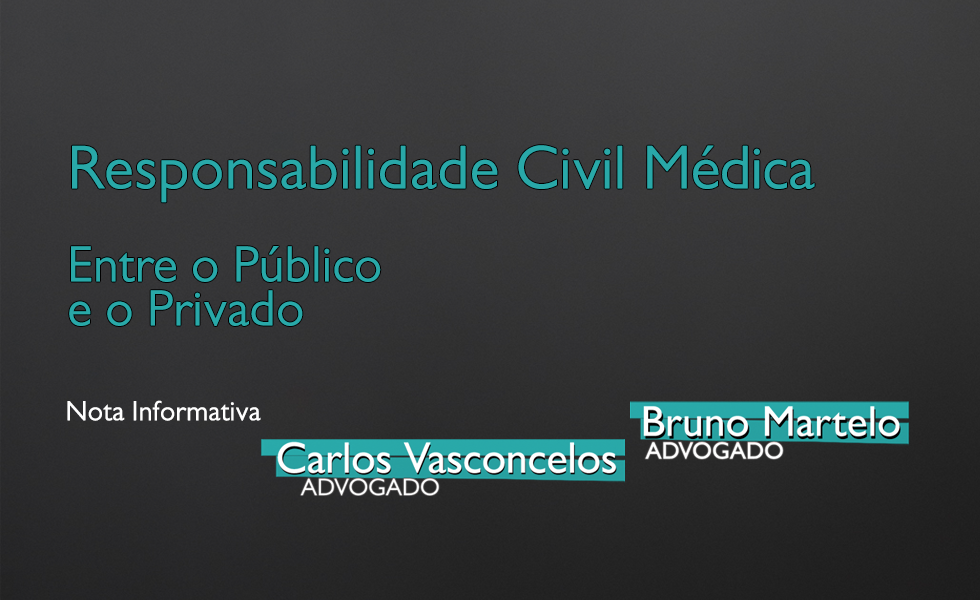Medical Liability: Between the Public and the Private Sectors

May 29, 2025
Legal Brief by Carlos Vasconcelos and Bruno Martelo
The doctor-patient relationship, much like tradition itself, is no longer what it once was. Citizens are more informed, more aware of their rights, and consequently, more assertive.
At the same time, technological advances and their impact on medical practice bring — alongside the myriad of well-recognised benefits — a host of new challenges and demands. Litigation, as current trends confirm, has been on the rise, making it increasingly important for all parties involved — patients, healthcare professionals, hospital managers, and service-providing entities and institutions, both public and private — to be fully aware of their rights and obligations, as well as of the responsibilities at stake.
In fact, we are witnessing the emergence of new realities that call upon the legal framework of medical liability, adding both complexity and relevance. Issues such as informed consent, the growing importance of collaborative medical practice, and the use of artificial intelligence bring new questions and perspectives that require responses aligned with modern standards.
Although medical liability — whether in public or private healthcare — is rooted in the same legal principle of civil liability, significant differences exist depending on the nature of the healthcare provider.
Without aiming to be exhaustive, several examples help to illustrate these distinctions:
- It is commonly accepted in Portugal that the relationship between a patient and a healthcare provider within the National Health Service (SNS) is not contractual in nature. As a result, any liability claims in this context fall under the Regime of Non-Contractual Liability of the State and Other Public Entities.
- In contrast, relationships between patients and private healthcare institutions are generally deemed to arise from a contract. Consequently, contractual liability is the prevailing legal framework in such cases.
- This divide between non-contractual and contractual liability leads to substantial differences — such as the limitation period (three years in the case of non-contractual liability, versus twenty years for contractual liability), the presumption of fault (which applies to private service providers, but not, in principle, to those in the public sector), and even the competent courts to hear the disputes.
- Moreover, in the public sector, the rule of exclusive liability of the State and other public legal entities applies for damages caused by unlawful acts or omissions committed with slight negligence. This means, among other things, that public officials and agents are only personally liable in cases of wilful misconduct or gross negligence, without prejudice to the joint liability of the public entity and its right of recourse against the individual in cases where such misconduct or gross negligence is proven.
- In the private sector, however, liability may be attributed either to the healthcare institution or to the healthcare professional directly — regardless of whether the conduct involved slight negligence, gross negligence or intent.
In short, when it comes to medical liability, the nature of the relationship — whether with a public or private healthcare provider — is far from irrelevant, from both the patient’s and the professional’s point of view. Substantive and procedural rules differ significantly depending on the context, as does the position of the parties in asserting or defending their rights and obligations.
Knowing and understanding these differences is an essential condition for all stakeholders to be better informed and protected.


